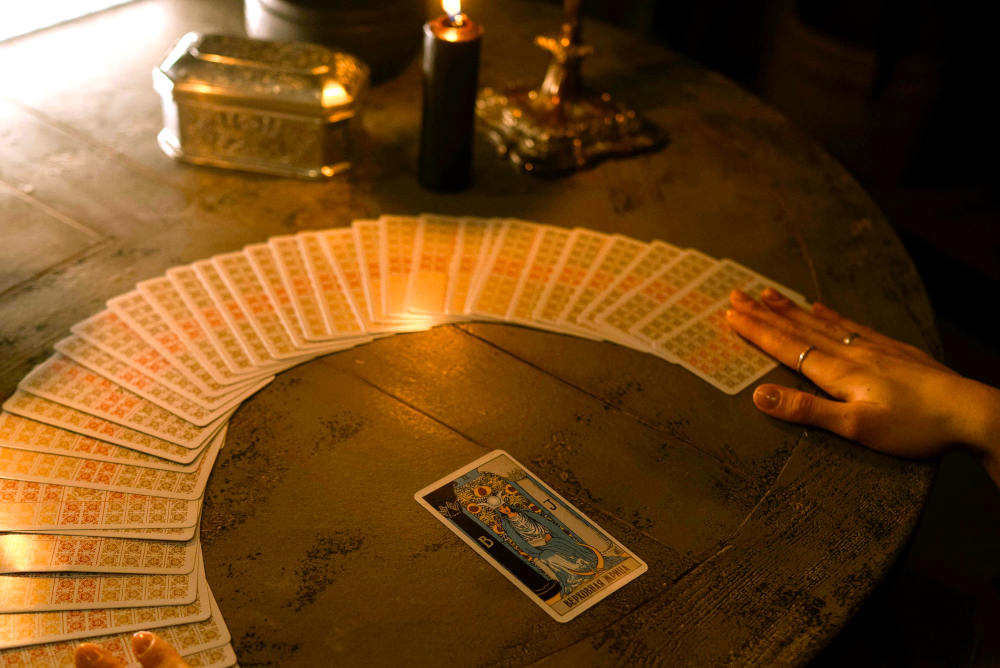
When most people hear the word "Tarot," they immediately think of mystical card readings or fortune-telling. However, the Tarot deck wasn’t originally designed for divination—it was created for playing a trick-taking card game that dates back to the 15th century in Europe. Known as "Tarot," "Tarock," "Tarocchi," or "French Tarot," this game is still actively played in several countries, especially France. If you're curious about learning how to play the Tarot game, this guide will walk you through its history, rules, card meanings, and tips to enjoy it fully.
Panaprium is independent and reader supported. If you buy something through our link, we may earn a commission. If you can, please support us on a monthly basis. It takes less than a minute to set up, and you will be making a big impact every single month. Thank you!
A Brief History of the Tarot Game
The Tarot card game originated in Northern Italy in the early 1400s. It evolved from traditional playing cards and was initially known as Trionfi, meaning “triumphs.” These early decks were used in a game similar to modern-day bridge or spades.
The use of Tarot for divination didn’t become popular until the 18th century. Until then, the primary use of Tarot cards was gameplay. In France, the game became widely popular and has continued to be played in various forms, most notably as Jeu de Tarot or "French Tarot."
The Tarot Deck for Gameplay
The game uses a special Tarot deck called the Tarot Nouveau, which is different from the divination Tarot deck like the Rider-Waite-Smith.
Components of a Tarot Game Deck:
-
78 cards total
-
56 suit cards (like a regular playing deck)
-
Suits: Spades, Hearts, Diamonds, Clubs
-
Ranks: Ace to 10, Jack, Cavalier (Knight), Queen, King
-
-
21 trumps (numbered I to XXI): These are special cards ranked in order of power.
-
The Fool (Le Mat): A special card outside the trump hierarchy that can be played at any time.
-
Key Card Types:
-
Trumps: Always beat suit cards unless another trump has been played.
-
The Fool: Functions as an "excuse" card that neither wins nor loses a trick.
-
Oudlers: These are special cards critical to winning. They include:
-
Trump I (the Petit)
-
Trump XXI (the Mond)
-
The Fool (Le Mat)
-
Objective of the Game
The main goal in Tarot is to win tricks and collect valuable cards. The key to victory is to reach a target number of points, depending on how many Oudlers you have by the end of the game.
Winning Thresholds:
-
0 Oudlers: 56 points needed to win
-
1 Oudler: 51 points
-
2 Oudlers: 41 points
-
3 Oudlers: 36 points
These point totals refer to the value of the cards collected during tricks.
Card Point Values
| Card Type | Points |
|---|---|
| Kings | 5 |
| Queens | 4 |
| Cavaliers | 3 |
| Jacks | 2 |
| Oudlers | 4.5 |
| All other cards | 0.5 |
How to Set Up the Game
Number of Players:
-
Standard game: 4 players
-
Variations can include 3 or 5 players.
Seating and Deal:
-
Players sit in a circle.
-
Each player is dealt 18 cards.
-
Six cards are placed face-down in the center (the chien or “dog”).
Game Phases
1. Bidding (The Call to Play)
Before the play begins, players bid to determine who will take the lead role of the Taker (the one who plays against the others).
Bid types from lowest to highest:
-
Petite: Standard contract
-
Push (or Garde): Doubling the score
-
Garde Sans le Chien: Without looking at the chien
-
Garde Contre le Chien: The chien is not used by anyone
The highest bidder becomes the Taker. The other players form a team called the Defense.
2. Taking the Chien
If the Taker’s contract allows, they add the chien cards to their hand and discard the same number of unwanted cards face-down. These discarded cards can't include any Kings, Oudlers, or Trumps (unless unavoidable).
3. Playing Tricks
Players play one card in clockwise order, following suit if possible.
Trick rules:
-
Must follow suit if you can.
-
If you can't, you must play a trump.
-
If you can’t follow suit or trump, you may play any card.
-
The highest trump wins the trick. If no trumps are played, the highest card of the led suit wins.
4. Scoring
After all tricks are played, cards are counted. Only the Taker’s team’s points matter for determining win/loss. The Taker compares their points to the threshold based on the number of Oudlers collected.
Strategy Tips for Playing Tarot
-
Manage the Oudlers: These cards are crucial to your final score. Try to retain or win them during the game.
-
Keep Track of Trumps: Observing which trumps have been played helps you plan future tricks.
-
Use the Fool Wisely: Since the Fool can escape any trick, it's best used when you would otherwise be forced to lose a valuable card.
-
Watch Opponents' Discards: Discard patterns can reveal suits they no longer have, which gives you a tactical edge.
-
Defense Collaboration: If you’re not the Taker, coordinate subtly with other defenders to strip the Taker’s strongest cards.
Common Variations of the Game
While French Tarot is the most popular, there are many regional versions with small differences. Some of them include:
1. Tarock (Austria)
-
Uses a 54-card deck
-
Includes similar bidding and trick-taking mechanics
2. Italian Tarocchi
-
More historical
-
Some versions include bidding or complex scoring systems
3. German Tarok
-
Rare today, but influential historically
Each variation has slightly different rules, but the core gameplay remains focused on trick-taking and strategic card play.
Where to Play Tarot Today
You can enjoy Tarot card games both in person and online. There are clubs in France, Belgium, and Switzerland that hold tournaments regularly. For online play, websites and apps like Jouer au Tarot, Tarot en Ligne, and BrettspielWelt allow people to play with others worldwide.
Why Learn the Tarot Game?
Besides its entertainment value, learning to play Tarot is a great way to connect with European culture and history. It also strengthens memory, strategy, and collaboration skills. Unlike the mystical interpretations of Tarot in divination, the card game offers an intellectually stimulating and social experience.
Final Thoughts
While Tarot cards are often associated with fortune-telling, their origins lie in a centuries-old card game that's still widely played today. With a unique deck, strategic bidding, and exciting trick-taking gameplay, the Tarot game offers a fun and challenging alternative to more common games like bridge or hearts.
Whether you’re looking to explore a piece of history or just want a new game to enjoy with friends, learning how to play Tarot opens the door to a rich tradition of logic, strategy, and community. Pick up a Tarot Nouveau deck, gather some friends, and start playing—no mystical powers required.
Was this article helpful to you? Please tell us what you liked or didn't like in the comments below.
About the Author: Alex Assoune
What We're Up Against
Multinational corporations overproducing cheap products in the poorest countries.
Huge factories with sweatshop-like conditions underpaying workers.
Media conglomerates promoting unethical, unsustainable products.
Bad actors encouraging overconsumption through oblivious behavior.
- - - -
Thankfully, we've got our supporters, including you.
Panaprium is funded by readers like you who want to join us in our mission to make the world entirely sustainable.
If you can, please support us on a monthly basis. It takes less than a minute to set up, and you will be making a big impact every single month. Thank you.































0 comments